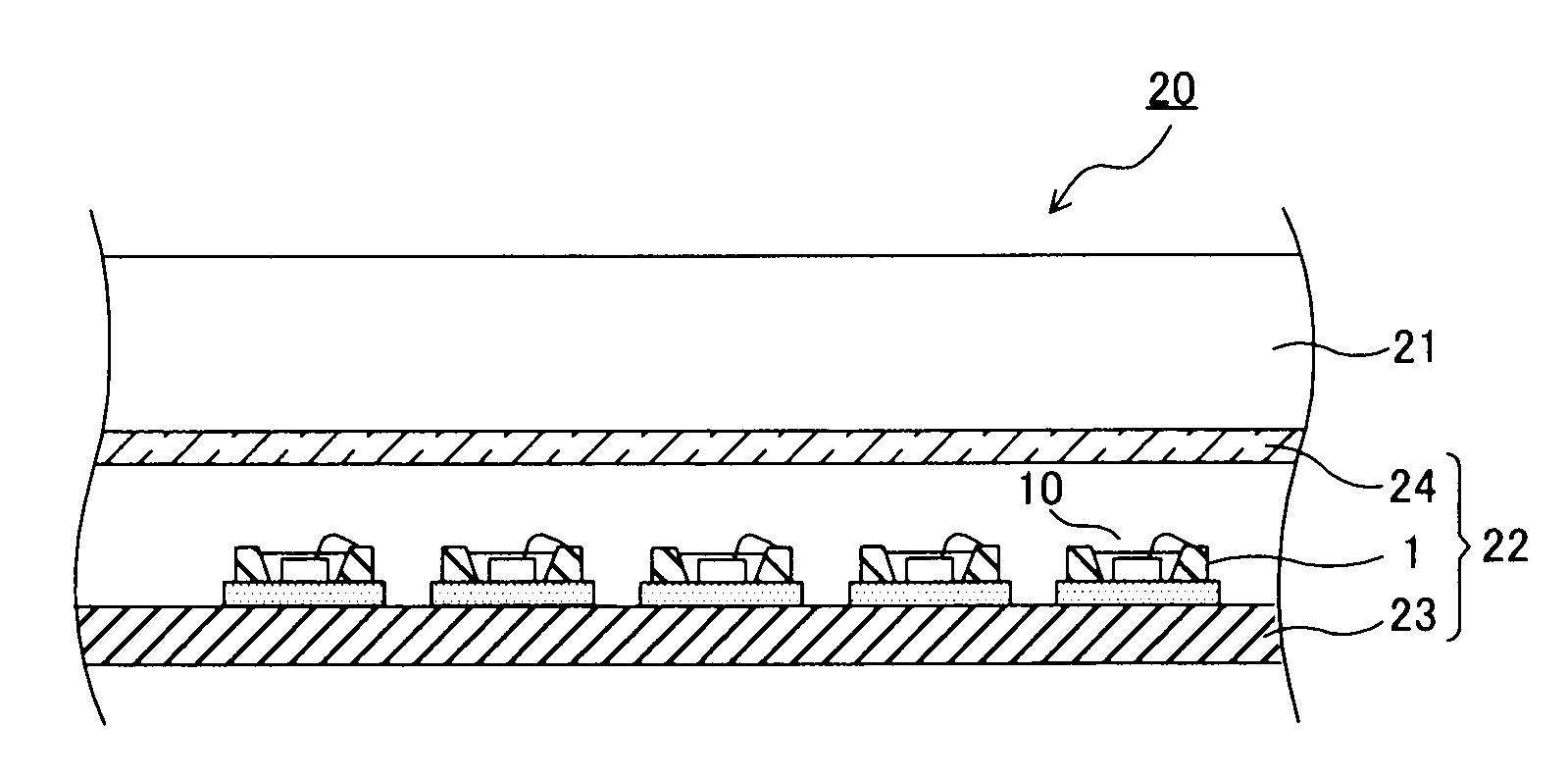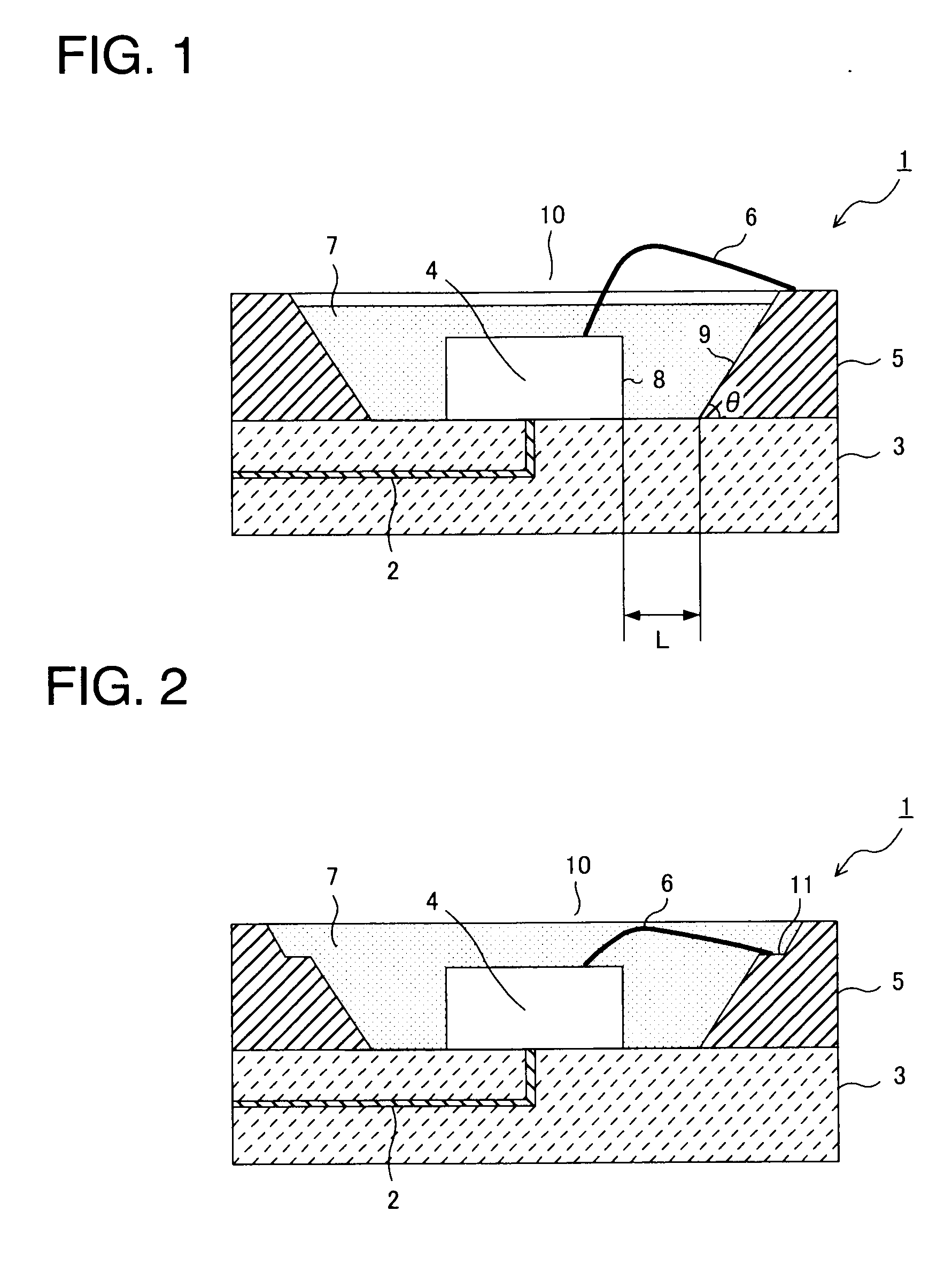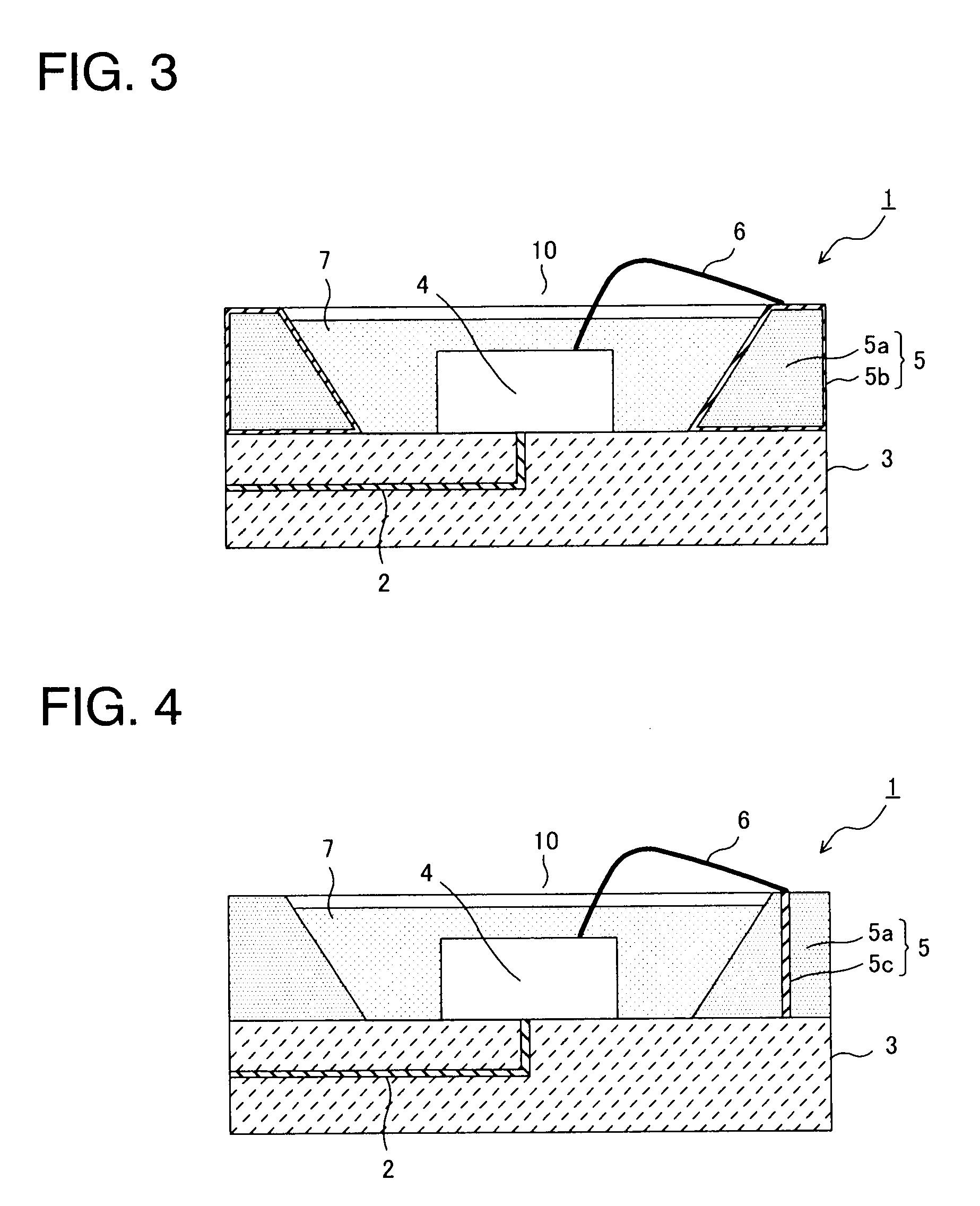Light-emitting device, backlight using same, and liquid crystal display
- Summary
- Abstract
- Description
- Claims
- Application Information
AI Technical Summary
Benefits of technology
Problems solved by technology
Method used
Image
Examples
examples 1 through 5
[0050]In Examples 1 through 5, the light-emitting device 1 of a white light-emitting type shown in FIG. 1 was produced. First, an aluminum nitride substrate 3 (5 mm high×5 mm wide×0.5 mm thick) having the internal wiring 2 shown in FIG. 1 was prepared. On the surface of the aluminum nitride substrate 3, a portion (including the exposed part of the internal wiring) to which an ultraviolet LED element 4 was bonded was gold-plated, and the light-emitting diode (UV-LED element) 4 (0.3 mm long×0.3 mm wide×0.3 mm high) for emitting ultraviolet light was bonded to that surface portion.
[0051]A reflector 5 (1 mm high, reflecting surface angle (θ) 45°) formed of silver-plated oxygen-free copper was bonded onto the aluminum nitride substrate 3 to surround the UV-LED element 4. The reflector 5 was used in plural types such that its distance (L) to the UV-LED element 4 fell in a range of 0.6 to 1.4 mm (Examples 1 through 5). The UV-LED element 4 and the reflector 5 was electrically connected by ...
examples 11 through 15
[0060]The white light-emitting device 1 (the distance (L) between the UV-LED element 4 and the reflector 5=0.8 mm) of Example 2 was used in quantity of 10 with the angle (θ) of the reflecting surface 9 of the reflector 5 varied in a range of 10° to 70° as shown in Table 3 to produce side light type backlights. The side light type backlights were evaluated for the presence or not of the uneven luminance and the emission luminance. The obtained results are shown in Table 3. The uneven luminance and the emission luminance were evaluated in the same manner as in Examples 6 through 10. The side light type backlights each were produced with the ten white light-emitting devices uniformly arranged at equal intervals.
TABLE 3Angle [θ] ofreflectingPresence ofsurface ofunevenEmissionreflectorluminanceluminanceExample 1170°AAExample 1260°AAExample 1345°AAExample 1435°AAExample 1510°AB
[0061]It is apparent from Table 3 that the side light type backlight has no occurrence of uneven luminance regard...
PUM
 Login to View More
Login to View More Abstract
Description
Claims
Application Information
 Login to View More
Login to View More - R&D
- Intellectual Property
- Life Sciences
- Materials
- Tech Scout
- Unparalleled Data Quality
- Higher Quality Content
- 60% Fewer Hallucinations
Browse by: Latest US Patents, China's latest patents, Technical Efficacy Thesaurus, Application Domain, Technology Topic, Popular Technical Reports.
© 2025 PatSnap. All rights reserved.Legal|Privacy policy|Modern Slavery Act Transparency Statement|Sitemap|About US| Contact US: help@patsnap.com



